PRESENTATION: Otras Montañas, Las Que Andan Sueltas Bajo El Agua
“The Current IV: Caribbean” 2023–2025, focuses on identifying, studying, and spreading the knowledge of the aesthetic strategies and tools generated from the Maroon experience in the Caribbean, with the intention to contribute to the emancipatory processes in the region that have sought to bring its inhabitants closer to the Ocean and that began in the high mountains above sea level.
By Dimitris Lempesis
Photo: TBA21–Academy Archive
Marking the 10th anniversary of its curatorial multi-year fellowship program “The Current”, TBA21–Academy presents “otras montañas, las que andan sueltas bajo el agua” (other mountains, adrift beneath the waves), the exhibition brings together newly commissioned works by Nadia Huggins and Tessa Mars. Spanning site-specific video and sound installations, sculpture and large-scale paintings, the exhibition inhabits the historic former church of San Lorenzo in Venice. In her video installation “A shipwreck is not a wreck” (2025), Nadia Huggins examines the potential of the tool improvisation~freestyle in interaction with human perception. If binary and stable frameworks have led to the internalizing of mechanisms of domination—both sensory and collective—then improvisation~freestyle compels us to confront the boundaries of this matrix, inviting us to recognize the need for alternatives. The work guides visitors through the skeletal remains of a shipwreck, now inhabited by both human and non-human entities undergoing a multi-vector process of transformation, ultimately merging into a common geological body and starting the cycle anew. The shipwreck itself is an enigmatic presence, known only through its physical manifestation in the exhibition space. The viewer bears witness to its catalytic impact on the processes unfolding in the work, where rocks, corals, humans, jellyfish, and mangroves collectively exemplify how the Ocean is both a generative force and a site of existence. Far from conforming to conventional notions of what is «good», their movements embody a spectrum of emotional complexity. By juxtaposing the shipwreck motif with interactions among the characters depicted in the work, the artist challenges the linear and often romanticized narratives with which both science and the humanities have historically approached world-building. “A shipwreck is not a wreck” employs a dynamic interplay of intensities, velocities, repeated movements, shifts in focus, and spatial, auditory, and temporal disorientation. These formal strategies serve to confront the limits of human sensory capacities while also pointing toward the possibility of expanding them, toward a point where perception itself becomes something other. In this way, improvisation~freestyle is not merely a thematic concern but an intrinsic methodology underpinning the reflective nature of the work. “otras montañas, las que andan sueltas bajo el agua” is structured as a dialogue in three acts: through Huggins’s reflective work, the first and third acts take place in the Oceanic realm, while the second act is anchored in the mountainous landscapes above sea level. In this segment, Tessa Mars explores these formations as historical and contemporary sites of marronage in Abya Yala—spaces where Indigenous and African-descended communities have sought to transcend the binary and stable perspective of reality imposed by colonial enterprises, a struggle that persists today in the ongoing contestation of subjectivity. In her painting installation “a call to the ocean” (2025), Tessa Mars considers improvisation~freestyle as a strategy for accessing spaces of “fugue”, a concept formulated by artist and philosopher Dénètem Touam Bona, for whom “to fugue is not to be sent running but, on the contrary, to make flee, to put it through endless variations so as to evade its grasp in every way. The fugue is creative ardour”. Thus, the interplay between improvisation~freestyle and fugue engenders a multiplicity of ways of being, resisting the co-optation of imposed realities while contributing to the saturation of the binary logic that underpins power structures. In Mars’s work, mountains are not merely passive features of the landscape but entities in themselves, their geological evolution inscribed within a cycle of fugue that has directly shaped human and non-human life. The artist contrasts terrestrial and oceanic perspectives: the former regards mountains as exploitable spaces within extractive economies, while the latter perceives them as key agents in the evolution of otherness. As visitors navigate the work’s multilayered composition, they encounter figures seemingly caught in deep slumber and undergoing morphological shifts. While each figure appears to be at a different stage of introspective transformation, the interplay between these layers suggests a form of collective harmony, a network woven through ethereal visitations from life forms whose movements belong to other temporalities, accompanying them in their process of (trans)formation. Their bodily realities are reconciled within the larger oceanic process of perpetual motion. Mars proposes that the mountains above sea level serve as guides in our journey toward submerged mountains. Endowed with our planet’s timeless wisdom, these mountains, adrift beneath the waves, remind us that they have not only harbored and catalyzed the possibility of other worlds, but may also provide the conditions for the materialization of alternative horizons yet to be seen.
Participating Artists: Nadia Huggins and Tessa Mars
Photo: “Volcano Moko” by Nadia Huggins, 2021, Courtesy the artist and TBA21–Academy Archive
Info: Curator: Yina Jiménez Suriel, Ocean Space, Chiesa di San Lorenzo, Campo S. Lorenzo, 5067, Venice, Italy, Duration: 5/4-2/11/2025, Days & Hours: Wed-Sun 11:00-18:00, www.ocean-space.org/

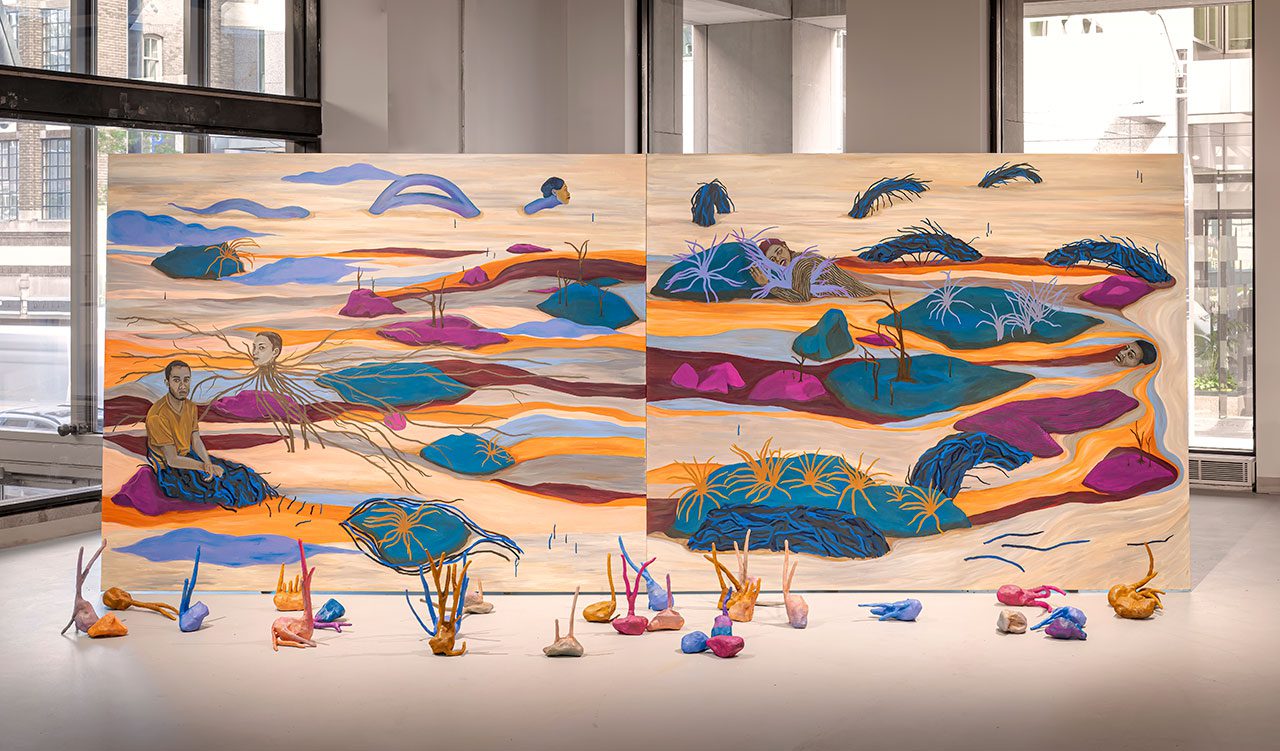

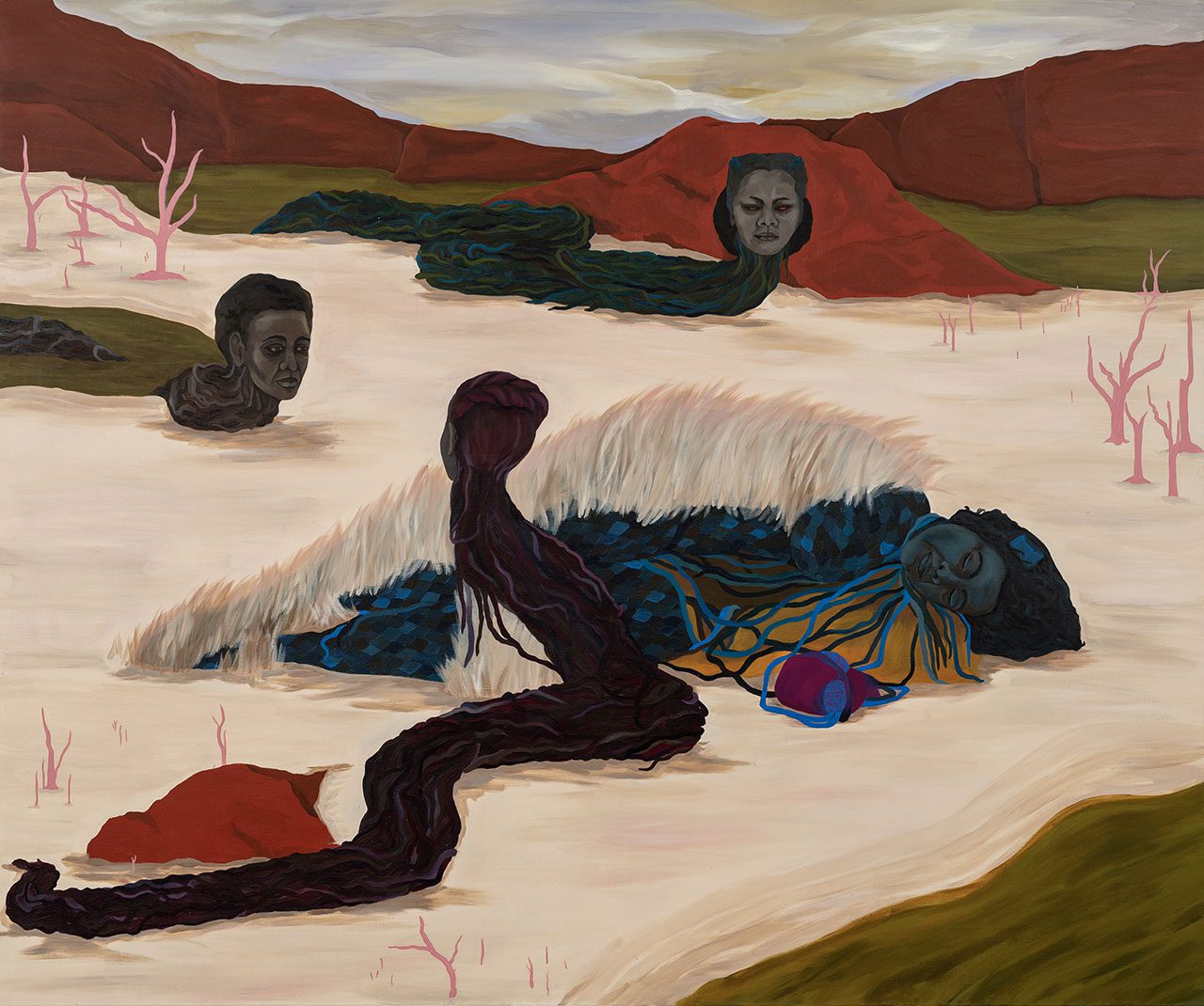
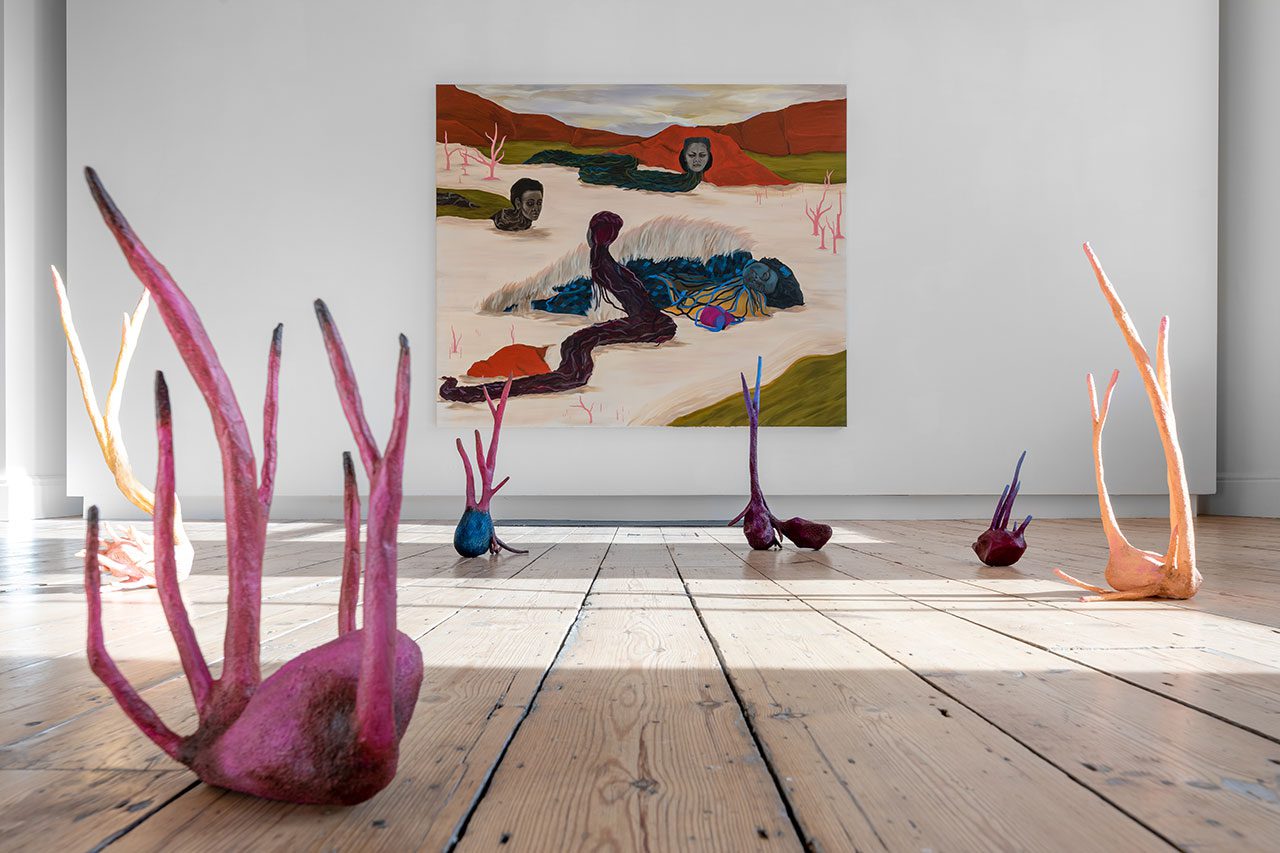
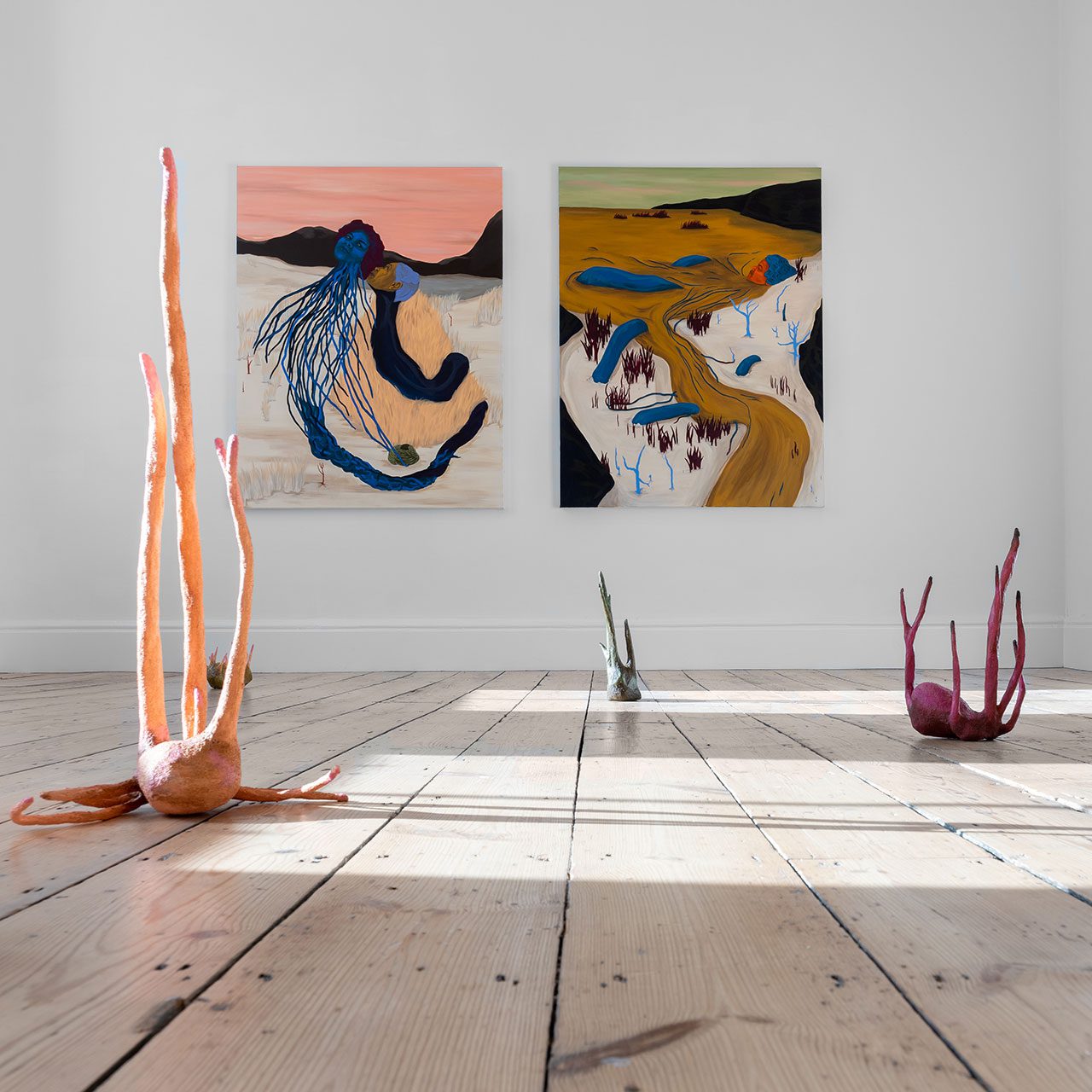
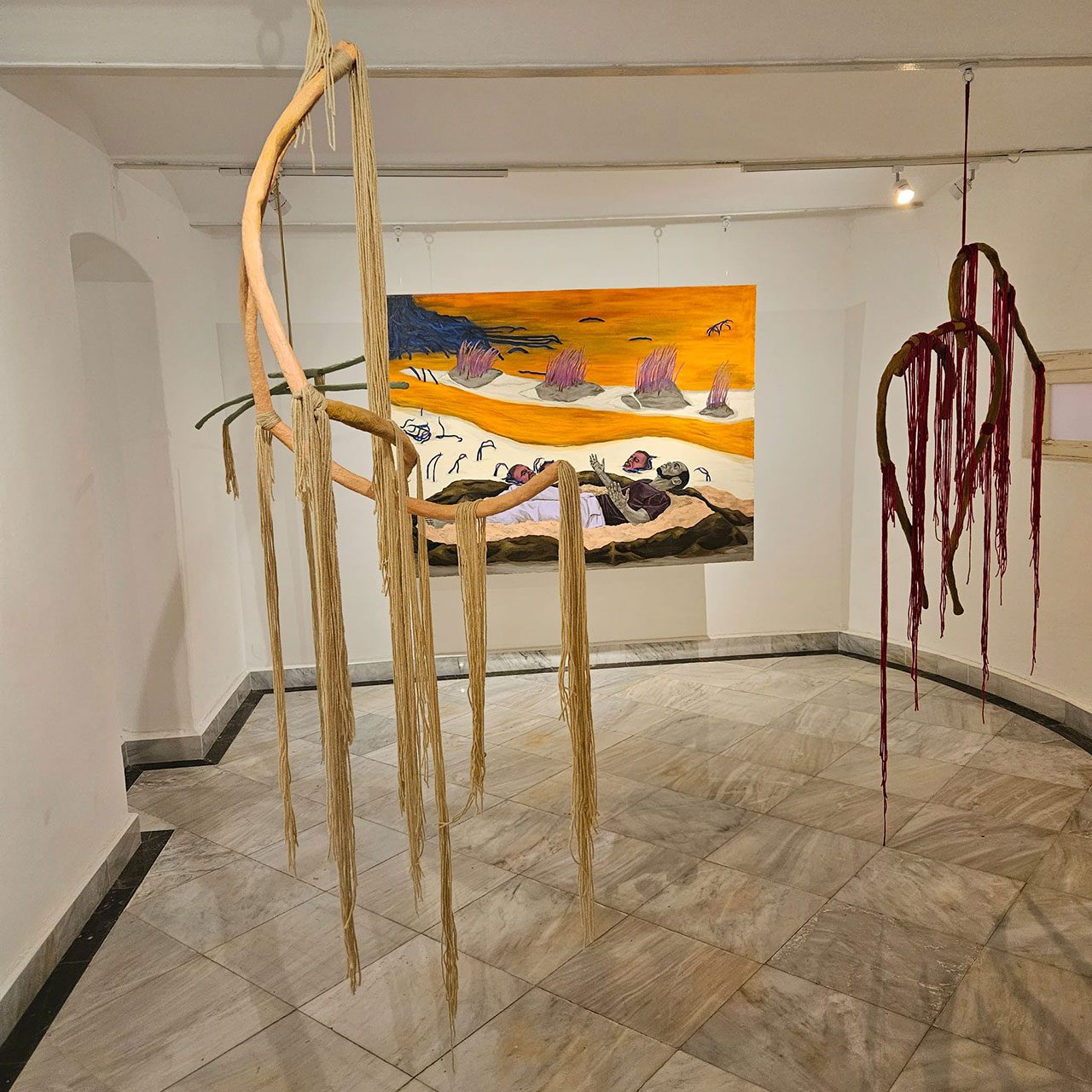
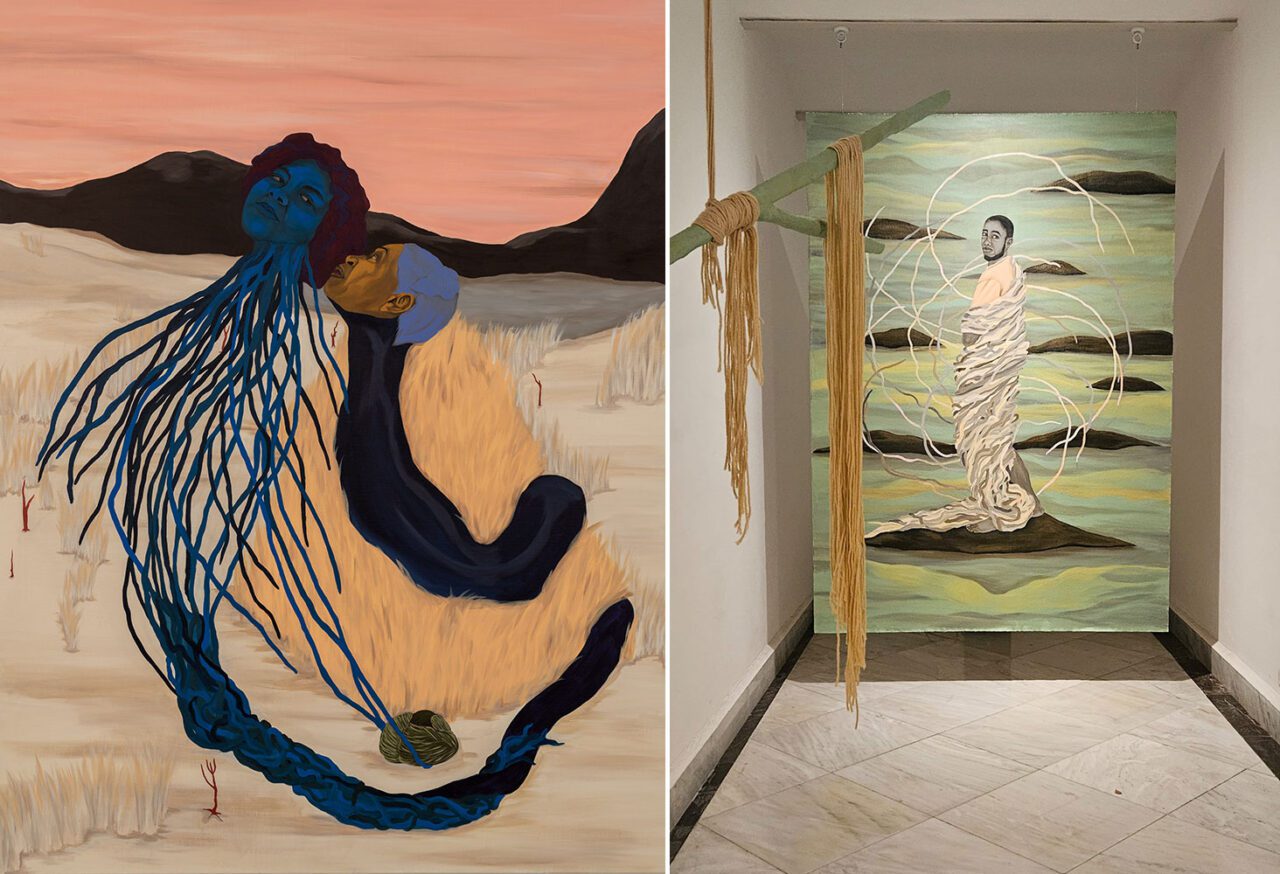
Right: Tessa Mars, Nan dòmi: las canciones que cantamos, 2014. On view at Casa del Lago Mexico city Photography: Tessa Mars

